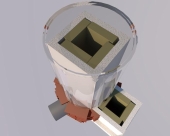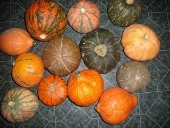I guess I should elaborate on a few things. The greenhouse will be in zone 8, and our winters are relatively mild, but we average maybe 10 nights per winter below freezing. I’m looking for a good way to keep the greenhouse above 40 degrees F during those cold periods.
I heat my house with a regular masonry heater using stored radiant heat, so this is not entirely foreign to me. My farm is off grid solar (8kw), so electric heat is not an option. I could maybe get by with a propane heater, but I much prefer using scrap wood as fuel rather than fossil fuels.
I definitely want to heat what will become a concrete counter top above the pipes or bell chamber to use as a seedling warmer. I’m hoping especially to grow onions and garlic from seed. Lots of other things, too, but I’ve never been successful with those.
I attempted to research the bell chamber, but ended up sort of confused. It reminds me of a smoker, which made me think I should make it double as that, but I guess with this unit the completeness of the combustion would not have enough smoke?
A secondary function of the greenhouse will be for processing wool (washing, drying, combing, carding, dyeing, maybe spinning) in the winter months (hence the big sink). I’m a shepherd and have lots of wool. Last, but not least, since I don’t have a dryer, I can hang clothes to dry even if it’s raining.
So, I’m not shooting for 70 degrees, but rather taking the edge off of cold nights. I think there will be a good amount of solar thermal gain in the 3 foot tall stone walls and precast countertops and stone floor, and that may be enough, but I think it won’t hurt to have this backup.








